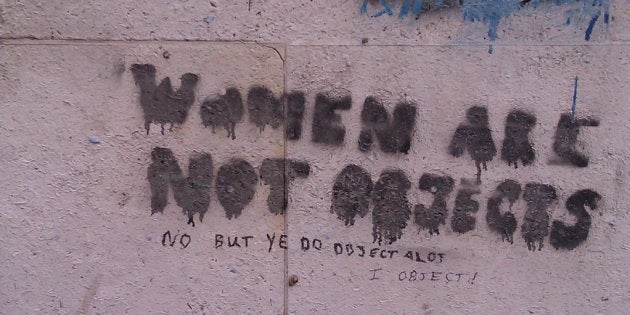
COMMENT
It would be remiss of me to start with such a bold headline without contextualising my stance. It is important to be cognisant of the fact that television, in particular soap operas, perpetuate the sexualisation and objectification of women before the acting has even started. In addition to this, the media continues to objectify women as well.
An example of this is "Isidingo", a South African soap that airs from Monday to Friday on SABC 3. I am a fervent viewer of the show and have understood the importance of the show's introduction.
The images that are displayed are of women placing guns beneath their garters, a woman in lingerie interlocking fingers with a man who is relatively undressed i.e. he is sleeping in a vest, a woman in lingerie rolling across the bed, a man gently moving a woman's lingerie in order to touch her skin, zoomed-in images of a woman touching her chest, and immediately after of a woman's feet in high heels.
The next image is focused on a woman's buttocks, and is followed by a female's leg as she steps out of a car. The last image is of a woman who crosses her legs while wearing shorts. This all occurs before the acting has even started. One cannot assume that this has no effect on how women are portrayed and used as a means to gain viewership, as well as how women are objectified.
On a surface level, this might seem acceptable, as the soap opera itself does enhance the emphasis on the female body and the manner in which females use their sexuality within the show. Yet the question remains: why is the same visualisation not applicable to men as well? Why are there not zoomed-in images of men's calves, biceps, backs and abs? Where is their objectification and sexualisation?
This places emphasis on the importance of representation, as well as who controls this representation. Essentially, whoever controls this representation has the most power.
All men have the ability to objectify women, even women can objectify other women – but it is the act of objectification that is problematic.
In a recent advertising campaign for NSFW, men were objectified and used as props in the photographs. This was accomplished through the representation of women in suits while men were naked. The women's positioning was that of dominance over the men, as they were always placed in higher positions in relation to the men.
In addition to this, men were placed in the background of the images and even when they were in the forefront, the focal point was still the woman in that specific image. I made two observations of this campaign.
Firstly, the men in the campaign were Caucasian, and secondly that the men's faces were hidden in most of the images. It is no secret that hegemonic cis-heterosexual power rests in the hands of the male Caucasian – but it would be remiss to say that men of other races do not objectify women as well. All men have the ability to objectify women, even women can objectify other women – but it is the act of objectification that is problematic.
The reason I included women in my analysis is that it would be ignorant to assume that all women are feminists or all women are political. Our interests differ, and therefore I am wary of saying only men objectify women.
People have written about how female celebrities such as Miley Cyrus, Christina Aguilera, Beyoncé, Iggy Azalea, Lady Gaga, Katy Perry, Britney Spears, Rihanna, Cardi B and Nicki Minaj objectify themselves in their music videos.
This has become problematised, when I believe it should not have been – at least they have the choice to do what they want with their bodies, and it is not a form of representation that is placed on them.
They have the onus to alter their brand and to decide how they want to portray themselves. And that is essentially what women have been fighting for, among other things:; the ability to make our own decisions.
The fact that men's faces were mostly hidden in those images is indicative of how the image of men is still "protected" in the campaign, as the same practice would not apply to women.
The female body is objectified and the female body is used as a tool to demean women and their capabilities.
If it were women, their faces would be visible – that is based on the notion that showing a naked woman's face will minimise her image and the manner in which the public will perceive her. I mention the problematic nature of the advertisement campaign, as I do believe that it fails to debunk the problem of objectification of the female body and of the importance of representation.
This is demeaning to women. A contemporary example of this is naked pictures that were released of Rwanda's female presidential candidate, Diane Shima Rwigara, in 2017. The release of these photographs was strategic, to decrease her chances of becoming president. This is demeaning, as it sexualises and essentialises the female body.
It is also indicative of how society treats women in relation to men. Had it been naked pictures of a man that were being released, then it would not have affected the public's image of him – nor would it affect his ability to run as a presidential candidate.
Yet the release of Diane Shima Rwigara's naked pictures was done to insinuate that she would not be a viable presidential candidate. This, in and of itself, is indicative of how political the female body is – as well as how the female body is linked to women's capabilities.
The female body is objectified, and the female body is used as a tool to demean women and their capabilities. The female body continues to be a political site of violence.
